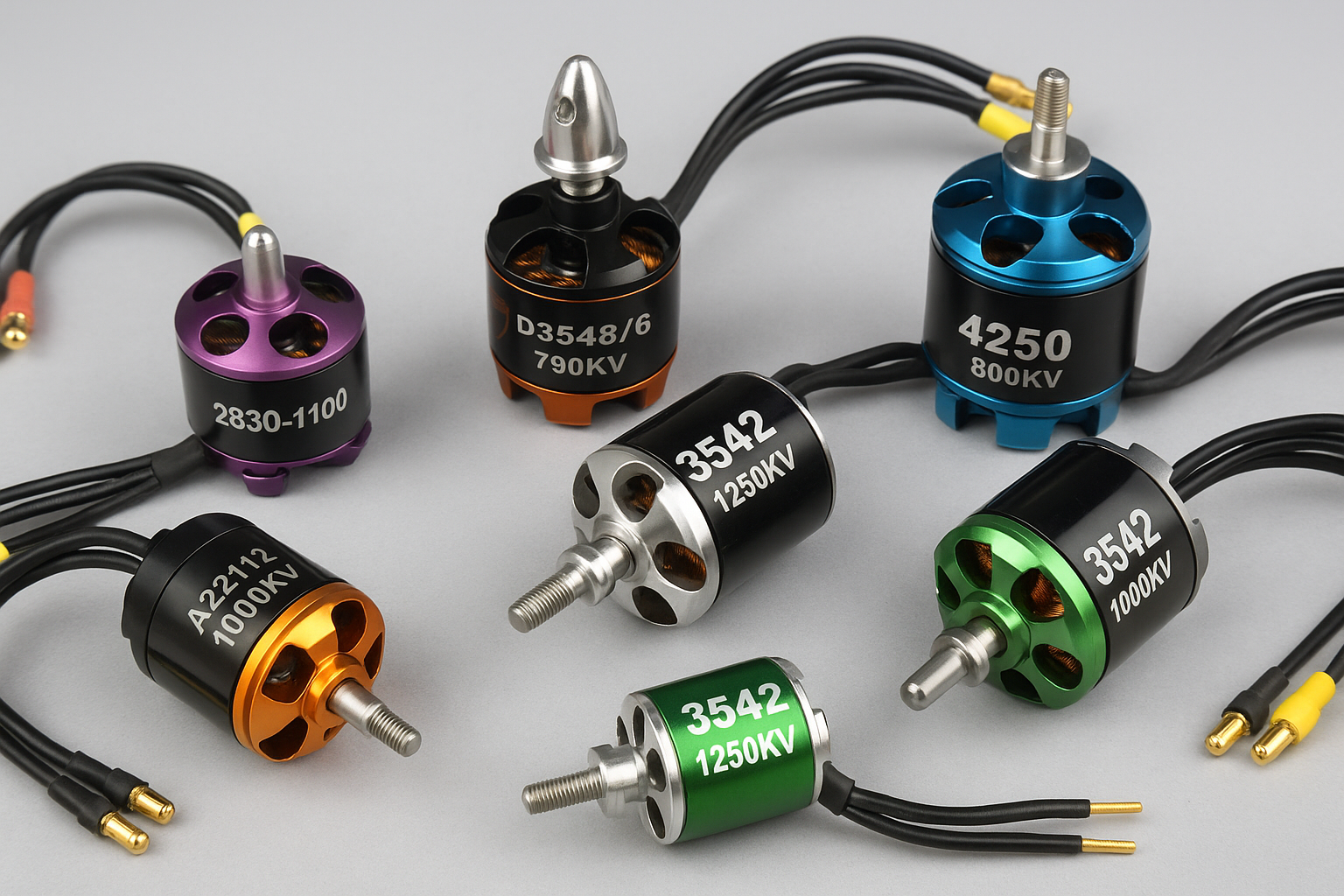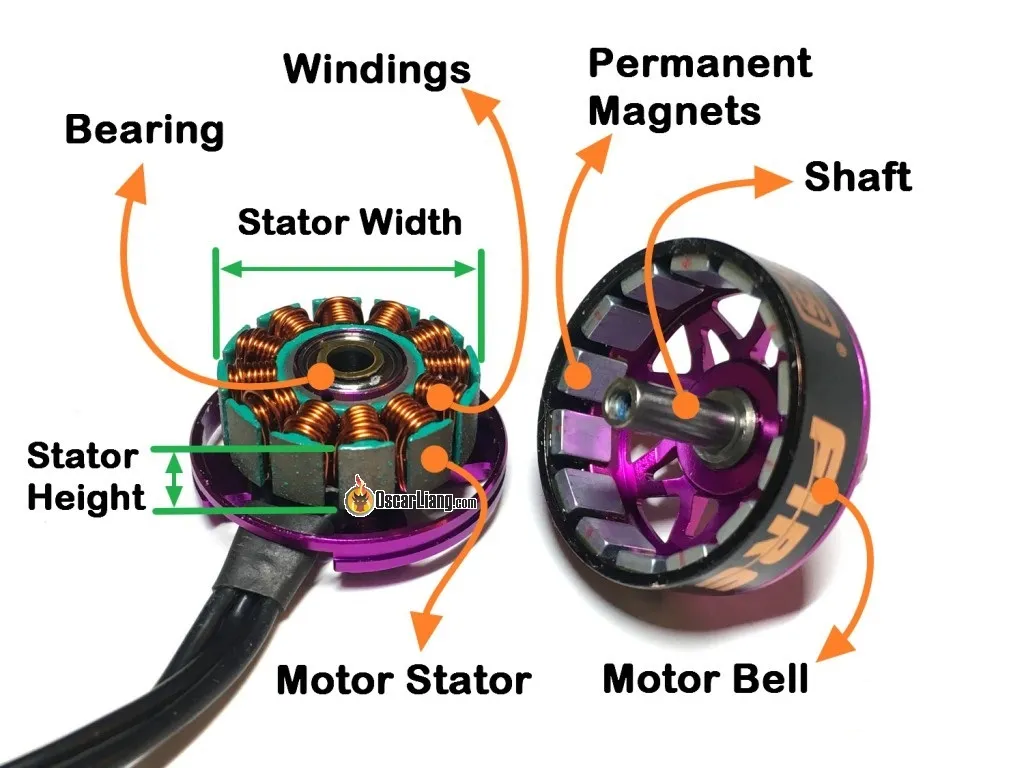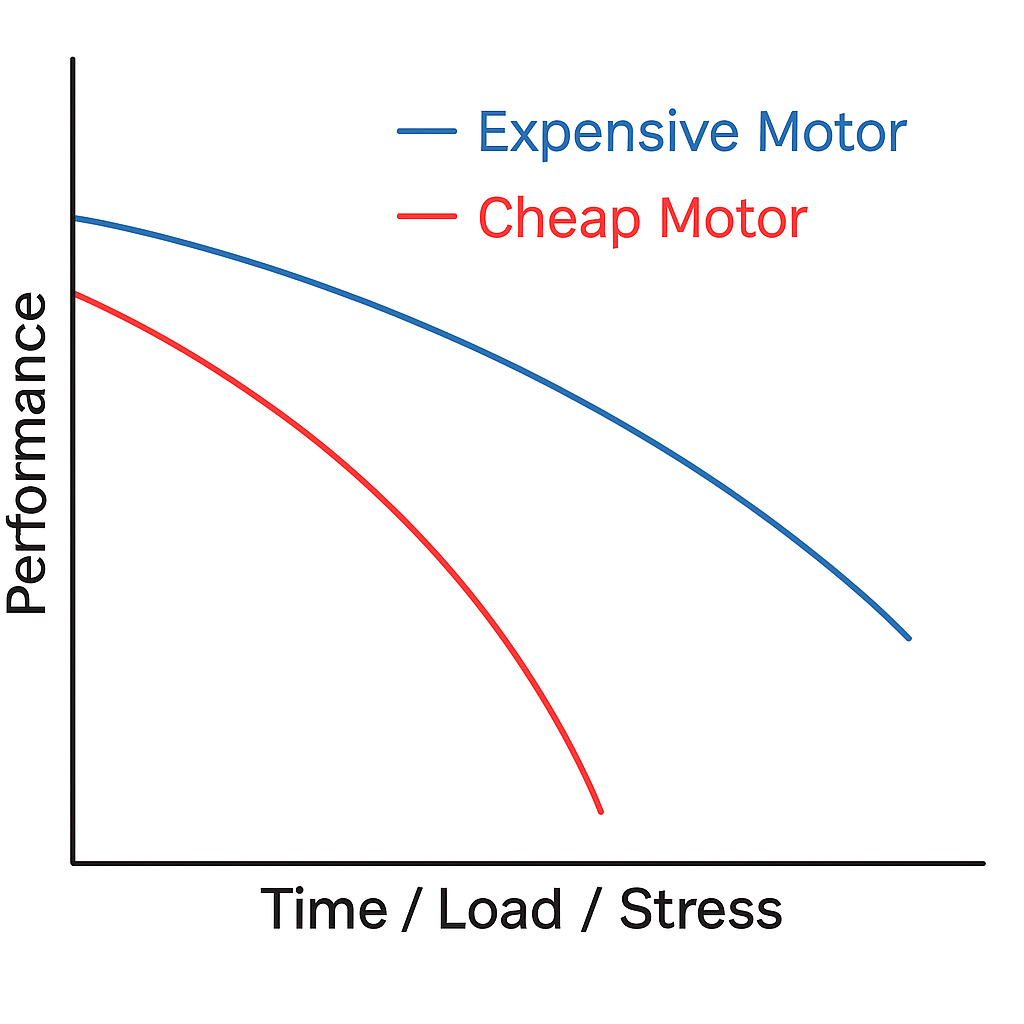The Big Brushless Motor Guide: Numbers, Performance, and Making the Switch from Nitro
There’s nothing quite like the thrill of choosing a new motor for your RC plane, but between the numbers, the codes, and all those shiny brands, it’s easy to feel overwhelmed. At The Flite Lab, we love helping flyers turn confusion into confidence! Whether you’re building from scratch, converting an old nitro favourite, or just curious about what really powers your wings, here’s your go-to guide.

What Do Those Motor Numbers Mean?
Every brushless motor is stamped with a mysterious sequence like 2212-1000KV or 3542-900KV. Here’s how to crack the code:
- First Four Digits (e.g. 2212): The first two digits show the stator diameter (the "muscle" in your motor, measured in mm). The next two digits are the stator length (also in mm).
- Brand/Model Letters: Those letters in front (e.g. “A2212”) are just brand/model identifiers—not size indicators.
Example: A “2212” motor has a stator 22mm wide and 12mm long. A “3542” is much bigger and stronger, perfect for larger models.

KV Rating: RPM per Volt
The “KV” in motor labels isn’t kilovolt—it’s RPM per volt with no prop attached. For example, a 1,000KV motor spins at 1,000 RPM for every volt applied.
- A 1,000KV motor on 10 volts = 10,000 RPM (no load).
- A 1,400KV motor on 12 volts = 16,800 RPM.
But remember: this is no load. When you mount a propeller, the loaded RPM will be lower. Higher KV = more RPM, less torque, best with smaller props. Lower KV = less RPM, more torque, can swing bigger props.
Propeller Size: Why It’s Critical
Picking the right prop isn’t just about maxing out size.
- Too large: Can overheat and damage your motor by drawing too much current.
- Too small: The motor spins easily but you lose thrust and your plane feels sluggish.
Always use the manufacturer’s recommended range for prop sizes based on your battery voltage and the motor’s KV. This is the sweet spot for best performance and safe operation.
Cheap vs. Expensive Motors: What Do You Get for Your Money?

Not all motors are created equal—even if their specs look similar!
- Cheap motors may use lower-grade magnets, thinner or impure copper wire, and rough bearings. They’re often less efficient, run hotter, and wear out faster.
- Quality motors have precise balancing, high-strength magnets, smooth bearings, and tighter assembly. You’ll get:
- More reliable performance (especially as loads increase)
- Greater efficiency (longer flight per battery)
- Quieter and smoother running
- Consistent thrust, less chance of failure
When does it matter? If you fly big, expensive, or aerobatic models—or if you just value peace of mind—invest in the best motor you can. For trainers and park flyers, a budget motor might do the trick until you’re ready to step up.
Glow vs. Electric: True Power & Thrust Comparison Table
Ever wondered what electric motor you’d need to replace your trusty old nitro? Here’s a table of real engine models with their props, loaded RPM, and actual thrust—matched to a typical electric setup for an apples-to-apples comparison.
| Engine (Nitro) | Prop Size | Loaded RPM (Nitro) | Thrust (g, Nitro) | Closest Electric Motor (Size/Kv) | Prop Size (Electric) | Loaded RPM (Electric) | Thrust (g, Electric) | Power (W, Electric) |
|---|---|---|---|---|---|---|---|---|
| OS .10 FP | 7x4 | 13,000 | ~550 | 2217 1700Kv | 7x4 – 8x4 | 12,500–13,500 | 400–650 | 180–220 |
| OS .15 LA | 8x4 | 12,000 | ~750 | 2830 1400Kv | 8x4 – 9x4 | 11,500–12,000 | 650–950 | 250–300 |
| OS .25 FX | 9x6 | 11,000 | ~1,000 | 3542 1100Kv | 9x6 – 10x6 | 10,500–11,500 | 950–1,200 | 350–400 |
| OS .40 LA | 10x6 | 10,000 | ~1,350 | 3548 900Kv | 11x7 – 12x6 | 9,500–10,500 | 1,300–1,700 | 550–650 |
| OS .46 AX | 11x7 | 9,800 | ~1,700 | 4250 700Kv | 12x6 – 13x8 | 8,500–9,500 | 1,800–2,200 | 700–850 |
| OS .60 FP | 12x8 | 9,000 | ~2,300 | 5065 550Kv | 13x8 – 14x8 | 7,500–8,500 | 2,400–2,900 | 1,000–1,200 |
| OS .91 FX | 14x8 | 8,500 | ~3,200 | 6374 400Kv | 15x8 – 16x10 | 7,000–7,500 | 3,300–3,900 | 1,500–2,000 |
*All thrust figures are estimated for standard sea level conditions and typical prop brands. Actual results may vary with altitude, propeller brand, and battery quality.*
How to Use This Table
- Find your nitro engine: See what you’re currently flying.
- See the electric equivalent: Motor, Kv, prop size, and what to expect for loaded RPM and thrust.
- Power rating: Typical full-throttle draw (use this for ESC and battery selection).
Pro tip: Always check your amp draw with a wattmeter when setting up a new electric combo—especially when swapping props or batteries!
Bonus Tips: Prop Selection and Setup
- Always balance your propellers for less vibration and longer motor life.
- For conversions, try to keep the thrust-to-weight ratio similar to your nitro setup. 1:1 thrust-to-weight means strong, sporty performance.
- No matter what your setup is always watch your current draw.
Let’s Build, Learn, and Fly—Together!
Understanding your motor numbers, matching power to prop, and making smart buying choices unlocks the full fun of RC flight. At The Flite Lab, we believe that the more you know, the more you enjoy every build and every flight. So next time you’re at the field, you’ll know exactly what’s spinning up front—and why it makes all the difference.
Article by James Roney for The Flite Lab - 1 June 2025
If you feel this article requires updating or corrections, please email james@theflitelab.co.za